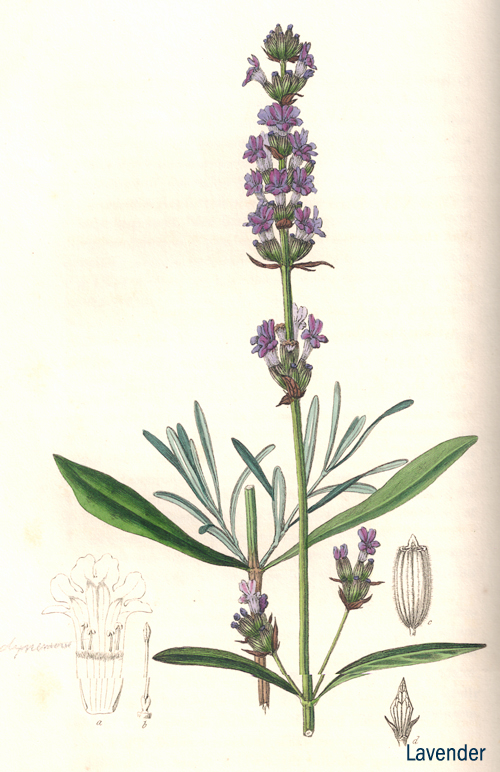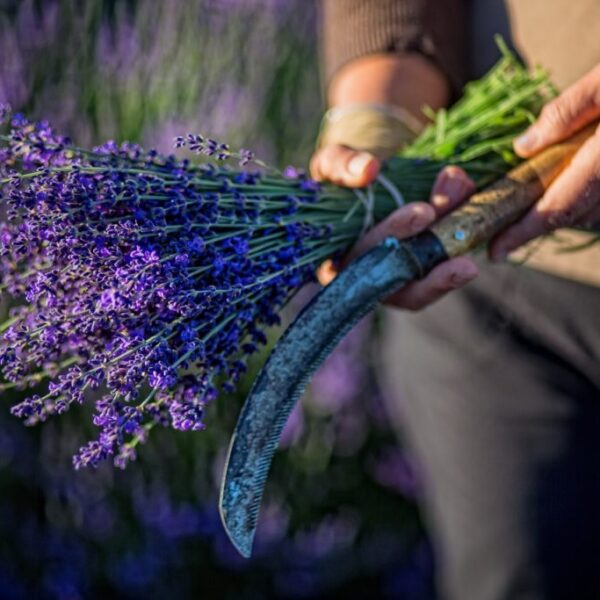
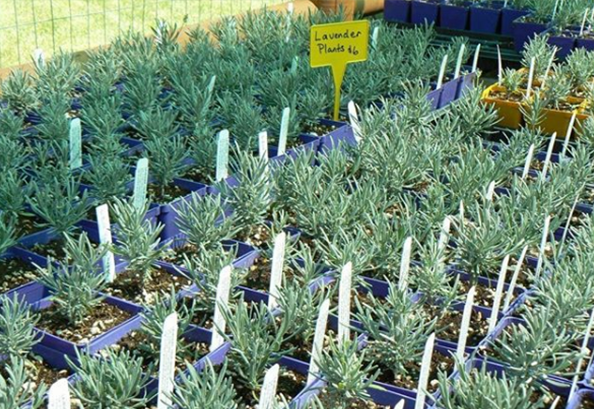
We grow over 50 cultivars and three species of lavender – a small fraction of what exists in the plant world
Growing lavender was inspired by a love of growing herbs. Lavender is one of the most versatile and well-known herbs of all time – its use can be dated back to Roman times. Lavender is an herb that’s both seductive and useful in many forms.
And, apart from being a wonderful landscape plant, lavender’s essential oil and hydrosol can be used in bath and body products. Lavender truly has attributes of endless possibilities.
The Lavandula Species
The Lavandula species comes from the large plant family of mints (Labiatiae, syn. Lamiaceae). It’s related to culinary and herbal tea mints, sage – both ornamental and culinary, marjorms, thymes, and horehounds. Lavender buds and corrollas can be used in both savory and sweet dishes, making it a great addition to one’s culinary and medicinal herb garden.
And, apart from being a wonderful landscape plant, lavender’s essential oil and hydrosol can be used in bath and beauty products. Lavender truly has attributes of endless possibilities.
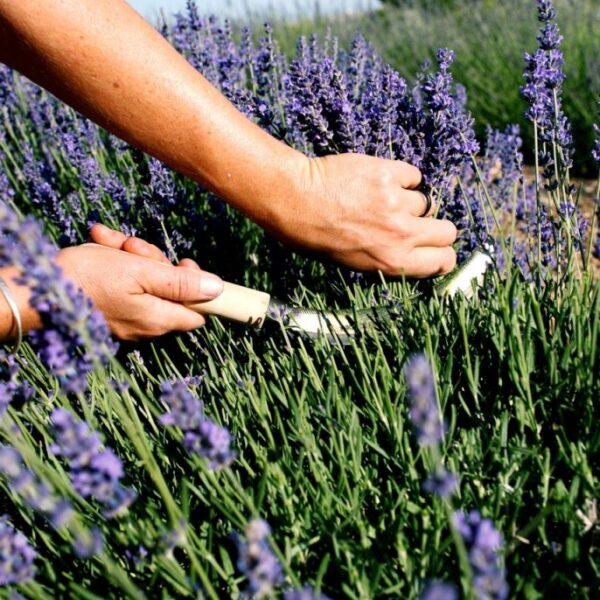
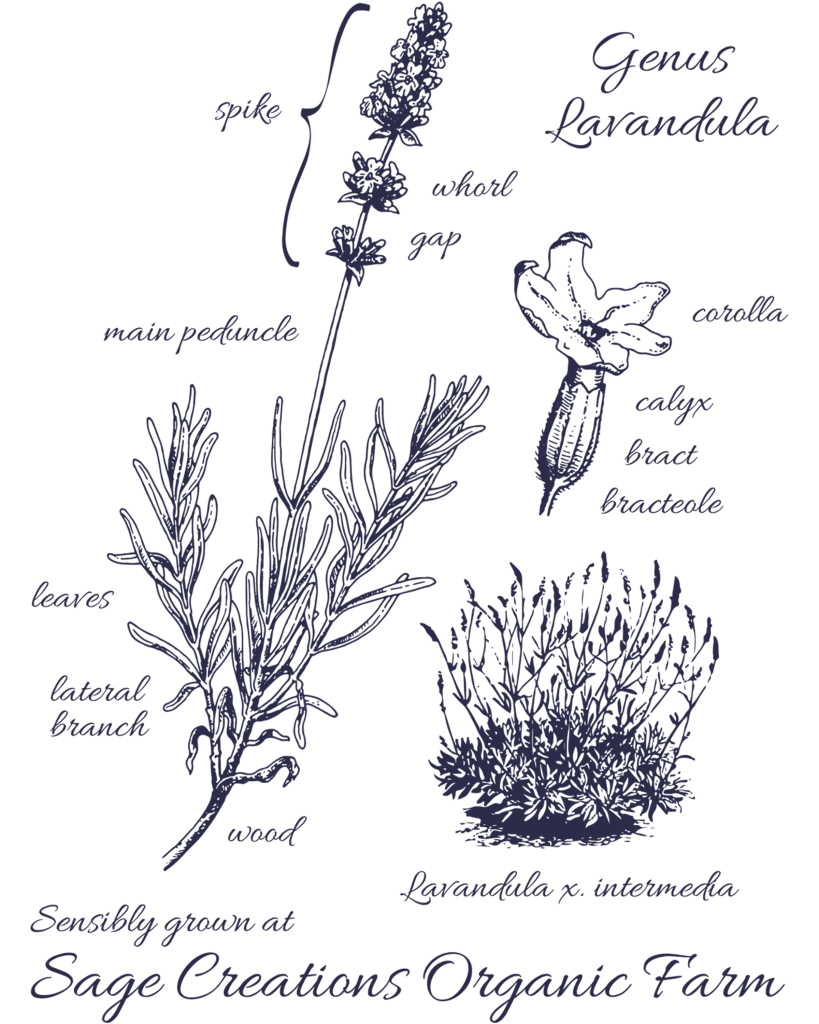
History of Lavender
For centuries, lavender has been distilled for its oil and used in perfumes, cosmetic products, aromatherapy, ointments and tinctures, and in food processing. The ancient Egyptians used this treasured herb in their mummification processes and constructed stills to extract the essential oil. The Romans routinely used lavender in perfumed oils, for bathing, for cooking and to freshen the air.
Even though there have been 2,500 years of recorded use, it’s unsure where exactly the plant originated from. History does show that lavender has been cultivated and grown wild in France, Spain and Italy since 600 BC. Lavender’s first recorded arrival in North America tells us the herb was brought by pilgrims in 1600s, around the same time lavender was introduced to England on a commercial level.
Over the centuries, lavender has been used therapeutically in soothing baths and washes, as a calming agent, and inhaled to relieve headaches and dizziness. Lavender’s herbal lore has been validated by modern medicine – Its oil has chemical compounds that have been scientifically shown to be a natural antiseptic and is effective in fighting against hyperactivity, and insomnia.
Today, lavender remains among the most versatile herbs. You can find it in candles, herb pillows, diffusers, flower wands, bouquets, sachets, soaps, wreaths, incense and potpourris, and beyond. Lavender essential oil continues to be used in perfumes, tinctures, bath oils and shampoos. We use the flower in aromatic vinegars, marinades and herb blends, and it’s also used as a flavor to conserves, liqueurs, jellies, ice cream and desserts.
Botanical Names of Lavender
To distinguish among the many lavender varieties and choose the right one for your needs, it is important to understand the common name and the botanical name for each lavender. In botanical nomenclature, every plant has, in addition to the common name, a name composed of its genus and species. All lavenders come from the genus Lavandula this will be listed first and capitalized or abbreviated by “L.”. The species name, which always follows the genus identifies a specific genus. For example the lavender known by the common name”English Lavender” is properly labeled Lavandula angustifolia-meaning narrow leaf. Typically a plant’s botanical name includes a variety name. The varieties(also know as culitvar or selection) are selected from natual seedling mutations and are alwyas propagated from cuttings taken from the mutations rather than the seeds. For example the name would read as follows – Lavendulua angustifolia ‘Royal Velvet’.
The most common species:
L. angustifolia – hardy to -25 to -10 degrees
Common name: English lavender
Uses: Primary source for essential oil used in perfume and aromatherapy. Delicate flavor from blossoms makes delicious addition to ice cream, and baked desserts.
Landscape Use: Striking edging annual flower, perennial flower, vegetable and herb beds.
L. dentata – hardy to 15 degrees
Common name: French lavender
Uses: Its astringent menthol and eucalyptus scent, precludes using it desserts, however can make it great for grilled meats.
Landscape use: Fill in middle ground of a flower border, long season bloom in some climates makes great border.
L. stoechas – hardy to 20 degrees
Common name: Spanish lavender
Uses: Not used for culinary, but can be distilled for the compound fenchone – the fresh piny, camphor elements and sweet lime accents.
Landscape Use: Middle ground of a border or landscape planting, with taller shrubs behind, or trimmed as hedge.
L. viridis – hardy to 15-20 degrees but can reseed
Common name: Green lavender (also known as yellow lavender or green Spanish lavender)
Uses: It’s mint, camphor, rosemary and citrus fragrance but more weighted pine and rosemary components lend itself to an excellent addition to breads, grilling, and hardy stews.
Landscape Use: Its chartreuse green make a nice focal point or or accent in perennial garden.
L . latifolia – hardy to 0 to -10 degrees
Common name: Spike lavender
Uses: Essential oil; the resinous overtones does not make it good to cook with, hower burning the foliage while grilling meats can tome down the plant’s strong overtones.
Landscape Uses: A showy single accent plant or mass plantings.
L. x. intermedia ‘Grosso’ – Lavandin (a hybrid of English lavender-L. angustifolia and spike lavender-L. latifolia) – hardy to 0 to -20 depending on culitvar
Common name: Lavender ‘Grosso’ or ‘Fat Spike Grosso’
Uses: Essential oil. Crafting. Foliage good for grilling and red meats
Landscape Use: A showy single specimen in the landscape; beautiful in a mass plantings in parallel rows.
Pterostachys lavenders – a broad category of lavenders of many species/subspecies – which all have in common winged spikes. These are frost tender varieties, no essential oils are extracted and smell varies wildy from no smell to bad smells. Uses vary depending on the sub species.
